This blog post is based on the diploma thesis work of Theotokatos Ioannis, a Computer & Informatics Department student, supervised by A. Koutras.
Metal music has long been recognized as a global phenomenon that transcends borders, languages, and cultures. But does geography truly shape the sound of metal? Through an innovative data-driven approach combining music information retrieval techniques with statistical analysis, we embarked on a journey to answer this fundamental question about one of the world’s most passionate musical communities.
The Quest to Quantify Metal’s Global DNA
Our research project set out to explore whether the acoustic characteristics of metal music vary significantly across different continents. Using Spotify’s comprehensive audio feature analysis, we created a carefully curated dataset of 500 metal tracks spanning five continents: Europe, Asia, Australia, North America, and South America. The collection encompasses ten major metal subgenres, from the foundational Heavy Metal to the extreme sounds of Death and Black Metal, ensuring comprehensive representation of the genre’s diversity.
The dataset is available as a public Spotify playlist for those interested in exploring these sounds firsthand: Metal Research Playlist
From Historical Context to Hard Data
The research began by tracing metal’s evolutionary journey across continents. In Europe, metal emerged from the working-class struggles of 1970s Britain, carrying themes of social commentary and historical reflection. The United States developed its own aggressive interpretation, eventually pioneering subgenres like Thrash and Death Metal. Asia presented perhaps the most fascinating case study, with countries like Japan creating entirely unique metal expressions that blend traditional elements with extreme innovation.
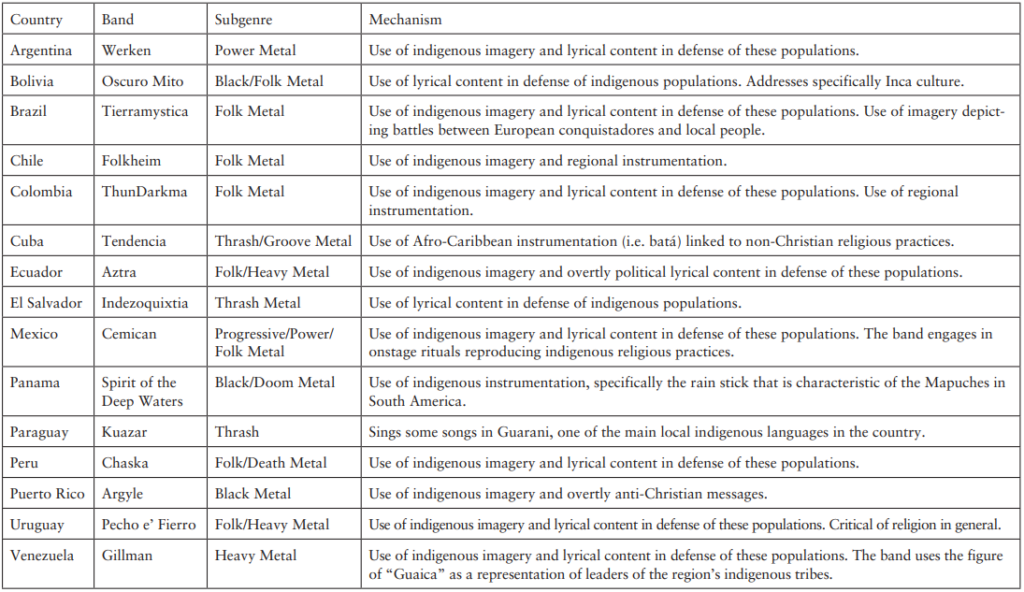
This historical foundation provided crucial context for interpreting our acoustic analysis. We hypothesized that these cultural and sociopolitical differences would manifest in measurable acoustic characteristics.
The Science Behind the Sound
Using Spotify’s Web API, we extracted detailed acoustic features for each track, including energy, loudness, danceability, acousticness, speechiness, and tempo. Our methodology employed advanced statistical techniques including Analysis of Variance (ANOVA), Principal Component Analysis (PCA), and correlation analysis to identify patterns in the data.
The results revealed compelling continental differences:
Key Findings by Acoustic Feature
Loudness emerged as the most significant differentiator across continents. Our analysis showed statistically significant differences (F(4, 452) = 2.61, p = 0.0349), with American metal tracks averaging notably higher loudness levels compared to Asian metal. This finding aligns with historical production differences and cultural attitudes toward sonic intensity.
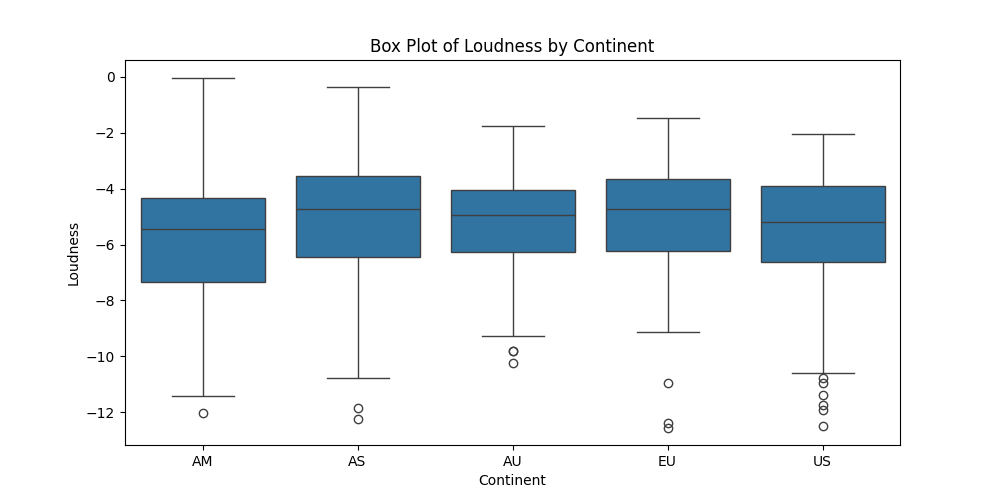
Speechiness also varied significantly across continents (F(4, 452) = 2.48, p = 0.0430), reflecting different approaches to vocal delivery and lyrical emphasis. Asian metal showed distinctly lower speechiness values, possibly reflecting the influence of instrumental virtuosity traditions and different linguistic approaches to metal vocals.
Acousticness demonstrated clear continental patterns (F(4, 452) = 3.09, p = 0.0159), with significant differences between Asia and the United States. This suggests varying approaches to incorporating acoustic elements and folk traditions into metal compositions.
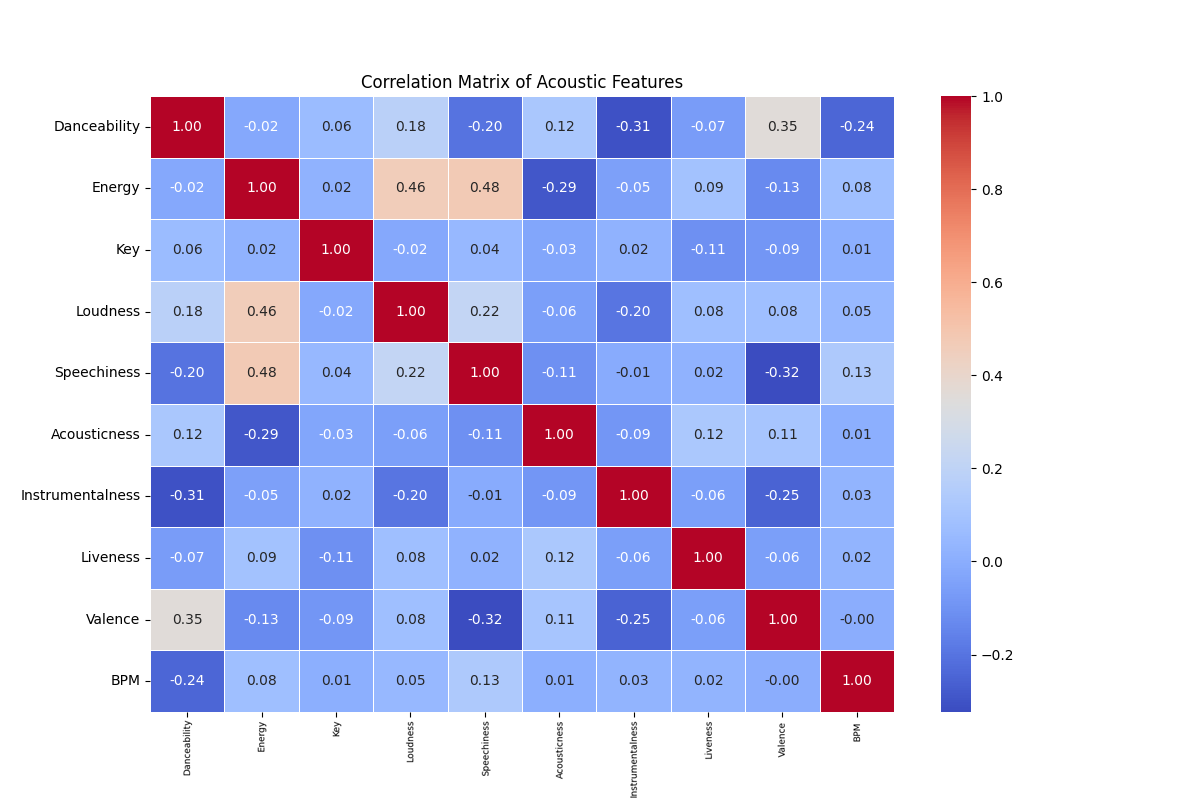
Genre vs. Geography: The Battle for Musical Identity
Perhaps our most intriguing discovery was that while continental differences exist, genre classification proved to be an even stronger predictor of acoustic characteristics. The two-way ANOVA revealed that metal subgenre had a highly significant effect on most features, suggesting that musical style transcends geographical boundaries in many cases.
However, the interaction effects between continent and genre told a more nuanced story. For features like danceability and instrumentalness, the relationship between geography and sound was moderated by specific metal subgenres, highlighting the complex interplay between global musical traditions and local cultural expressions.
Striking Examples from Our Database
Our dataset revealed fascinating individual cases that exemplify continental differences:
- Asian Precision: Japanese bands like Loudness and X Japan demonstrated the region’s characteristic high-energy, technically precise approach with lower speechiness values
- American Aggression: US thrash pioneers like Metallica and Megadeth showcased the continent’s signature high-loudness, aggressive production style
- European Heritage: Scandinavian black metal acts displayed unique acousticness patterns reflecting the region’s folk music integration
- South American Fusion: Bands incorporating indigenous instruments showed distinctive acousticness signatures that set them apart from other continental styles
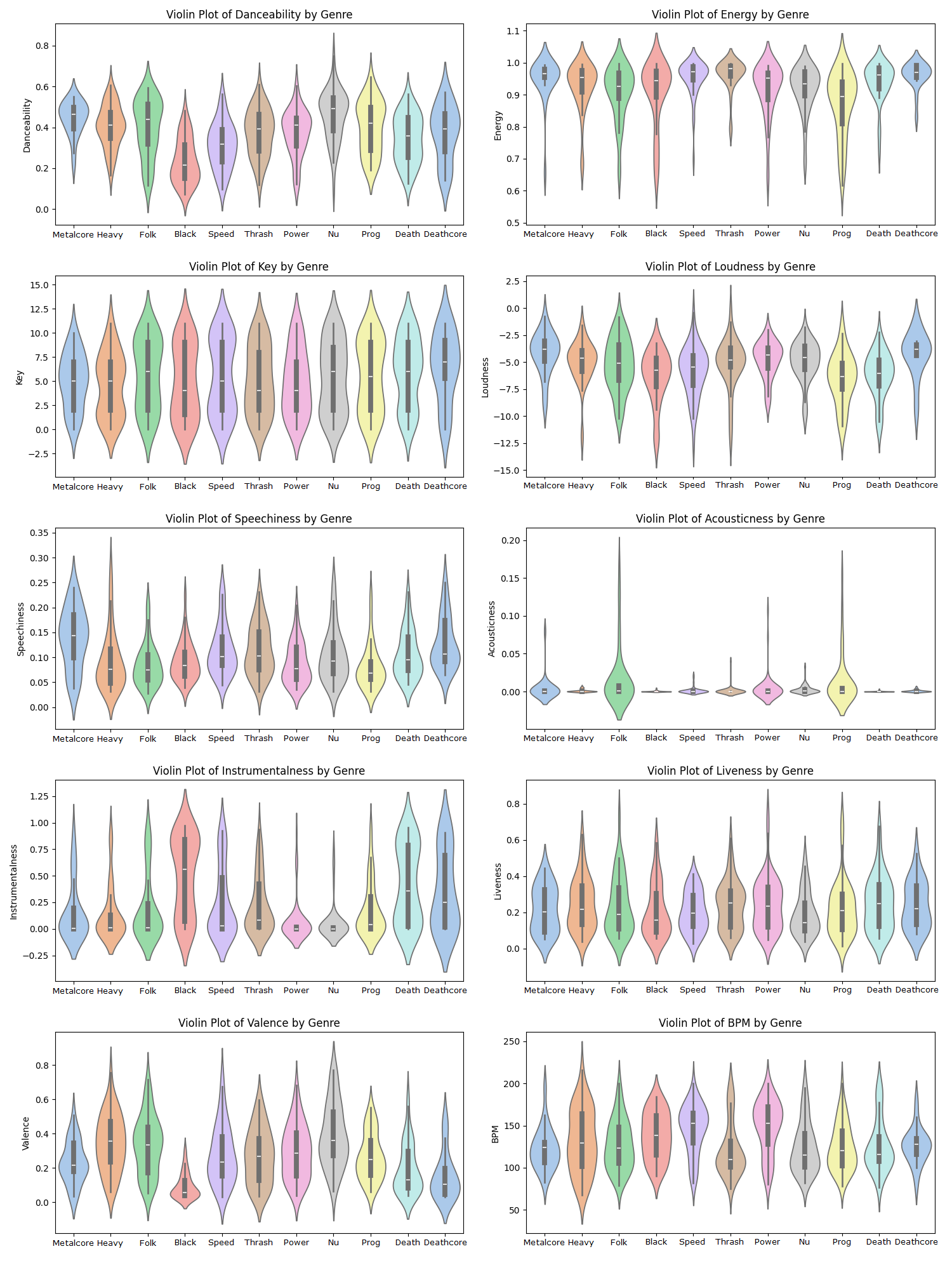
The Verdict: Unity and Diversity in Metal’s Global Sound
After analyzing 500 tracks across multiple statistical dimensions, our research reveals that metal music does indeed diverge based on geographical location, but not uniformly across all continents. The most significant division appears between Eastern and Western musical traditions rather than among individual continents.
Key Continental Characteristics:
Asia emerged as the most acoustically distinctive region, showing the greatest variations per subgenre due to the continent’s diverse cultural backgrounds and unique adaptation of Western metal traditions. The integration of traditional instruments, different vocal approaches, and technical precision created a measurably different sound profile.
The Americas (both North and South) maintained closer alignment with metal’s European origins while developing their own intensity signatures, particularly in loudness and energy characteristics.
Europe served as the sonic baseline, representing the genre’s foundational characteristics against which other continents’ variations could be measured.
Australia displayed characteristics that bridged Eastern and Western approaches, reflecting its unique position as a Western culture in the Eastern hemisphere.
Future Directions: Diving Deeper into Metal’s DNA
This research opens exciting possibilities for future investigation. A country-level analysis could reveal even more nuanced patterns, particularly highlighting how nations like Japan have created entirely distinct metal identities. Additionally, expanding the dataset to include Africa’s rich metal traditions and examining temporal changes in these patterns could provide deeper insights into metal’s ongoing global evolution.
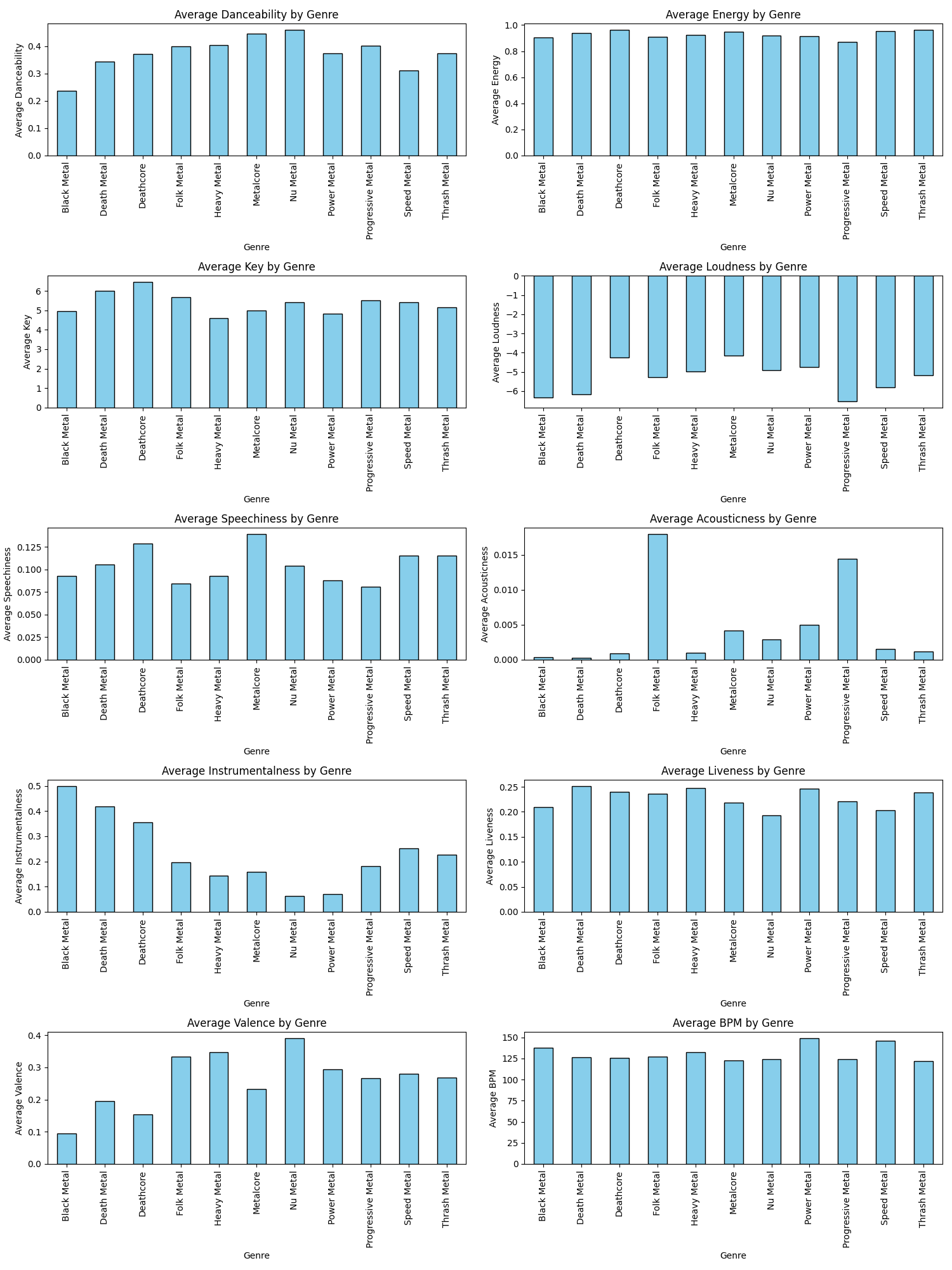
Our findings demonstrate that while metal music maintains core unifying characteristics across the globe, geographical and cultural factors do create measurable acoustic differences. These variations don’t fragment the metal community but rather enrich it, creating a global tapestry of sound that reflects both universal human experiences and local cultural expressions.
The numbers tell a compelling story: metal music is simultaneously a universal language and a collection of distinct regional dialects, each adding its own voice to the genre’s ongoing global conversation.
For those interested in exploring the complete dataset and methodology, the full thesis provides detailed statistical analysis and code implementations. The Spotify playlist remains available for anyone wishing to experience these continental differences firsthand.


